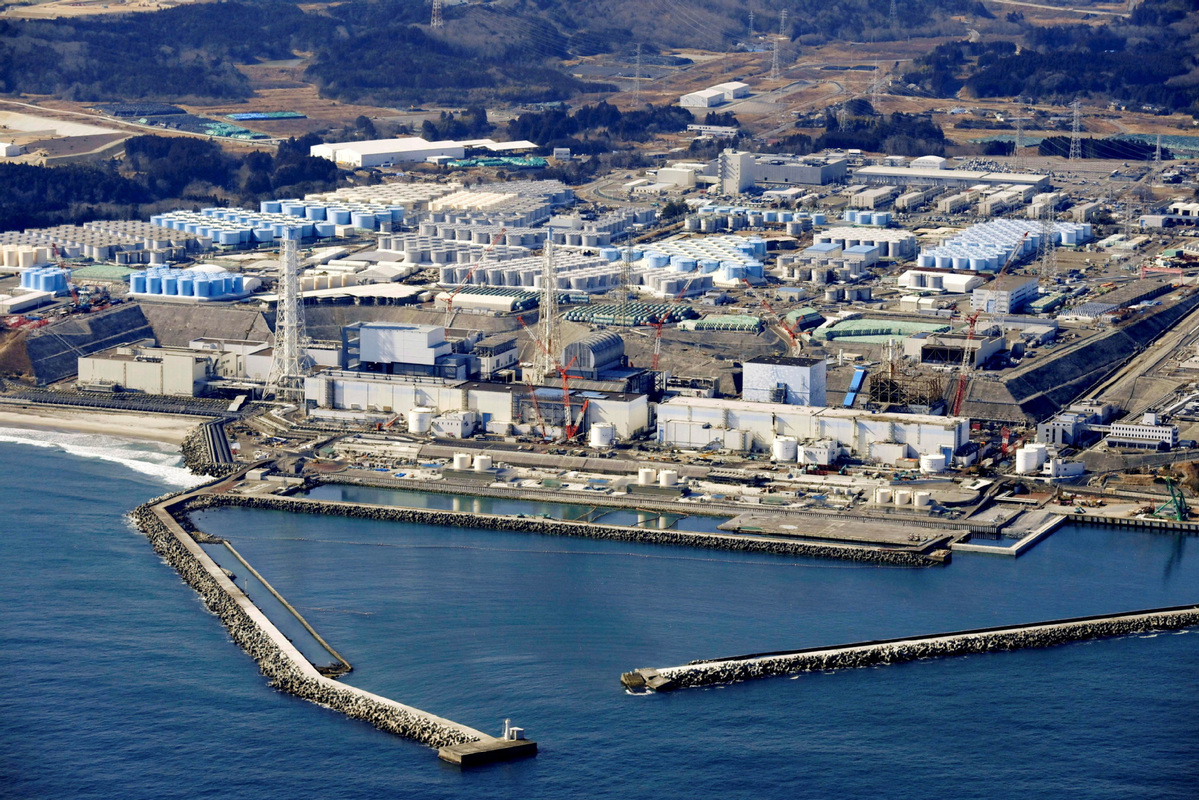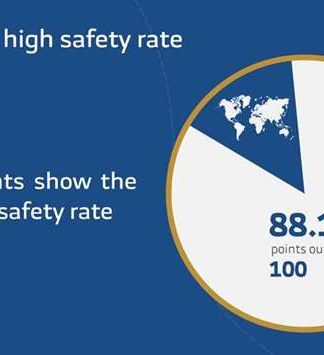Pacific Ocean is not a trash can for Japan’s waste disposal
China Daily | Updated: 2023-04-24 08:15
An aerial view shows the storage tanks for treated water at the tsunami-crippled Fukushima Daiichi nuclear power plant in Okuma town, Fukushima prefecture, Japan, Feb 13, 2021, in this photo taken by Kyodo. [Photo/Agencies]
Saturday was Earth Day and also the World Law Day this year. Over the weekend, civil society and environmental groups around the world staged wide protests against the Japanese government’s plan to release contaminated water from Fukushima nuclear power plant into the sea.
Greenpeace issued a statement recently, criticizing the Japanese government’s decision to discharge the contaminated water into the sea as violating international laws such as the UN Convention on the Law of the Sea, and accusing Japan of failing to fulfill its international obligations to assess the environmental impacts of the ocean discharge.
Since the Japanese government announced its plan to dump the toxic water into the sea two years ago, there has been fierce opposition and skepticism. Yet it has chosen to press ahead with the plan even before the International Atomic Energy Agency releases its assessment report.
It is not difficult to see that the Japanese government did not focus on finding the right way to deal with the nuclear contaminated water, but racked its brains to downplay and cover up the consequences of its proposed solution.
Globally, there is no precedent for the release of nuclear-contaminated water into the sea. The 2011 Fukushima nuclear accident, one of the worst ever, produced contaminated water containing more than 60 radionuclides, according to preliminary estimates. And the current technology is unable to remove tritium and other radioactive elements from the water. Tritium can poison the DNA and reproductive systems of aquatic animals, entering the food chain. To completely discharge the water into the sea could take 30 years or more.
Japan has other options for dealing with its huge stockpile of contaminated water, such as steam discharge, hydrogen discharge and burial. It has chosen the cheapest one for itself but the most costly one for the world.
Surveys in Japan show that the Japanese people agree that the Japanese government’s unilateral push to discharge the toxic water into the sea without exhausting the means of safe disposal and fully consulting its neighbors is a chilling move to transfer unpredictable risks to mankind.
The discharge of nuclear contaminated water is not a private matter for Japan, as it is related to the sustainable development of mankind. The Pacific is not a dumping ground for Japan’s waste, but a public resource on which many countries depend.
The Japanese side should proceed from an objective and scientific perspective and adopt truly safe methods to deal with the nuclear-contaminated water. The country should not act without the authorization of the IAEA before all stakeholders confirm the safety of the drainage plan. Otherwise, the compensation it would be obliged to pay for all victim countries and to restore the ecological damages of the Earth will make it regret its actions.






























